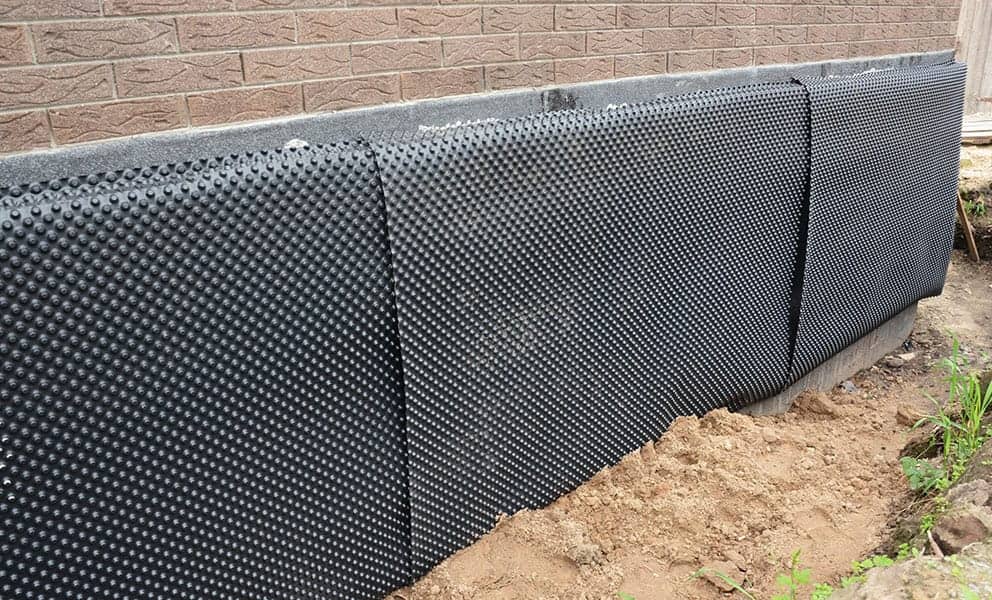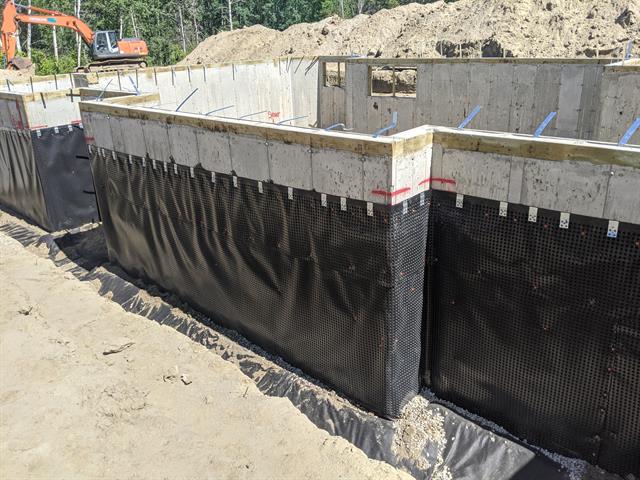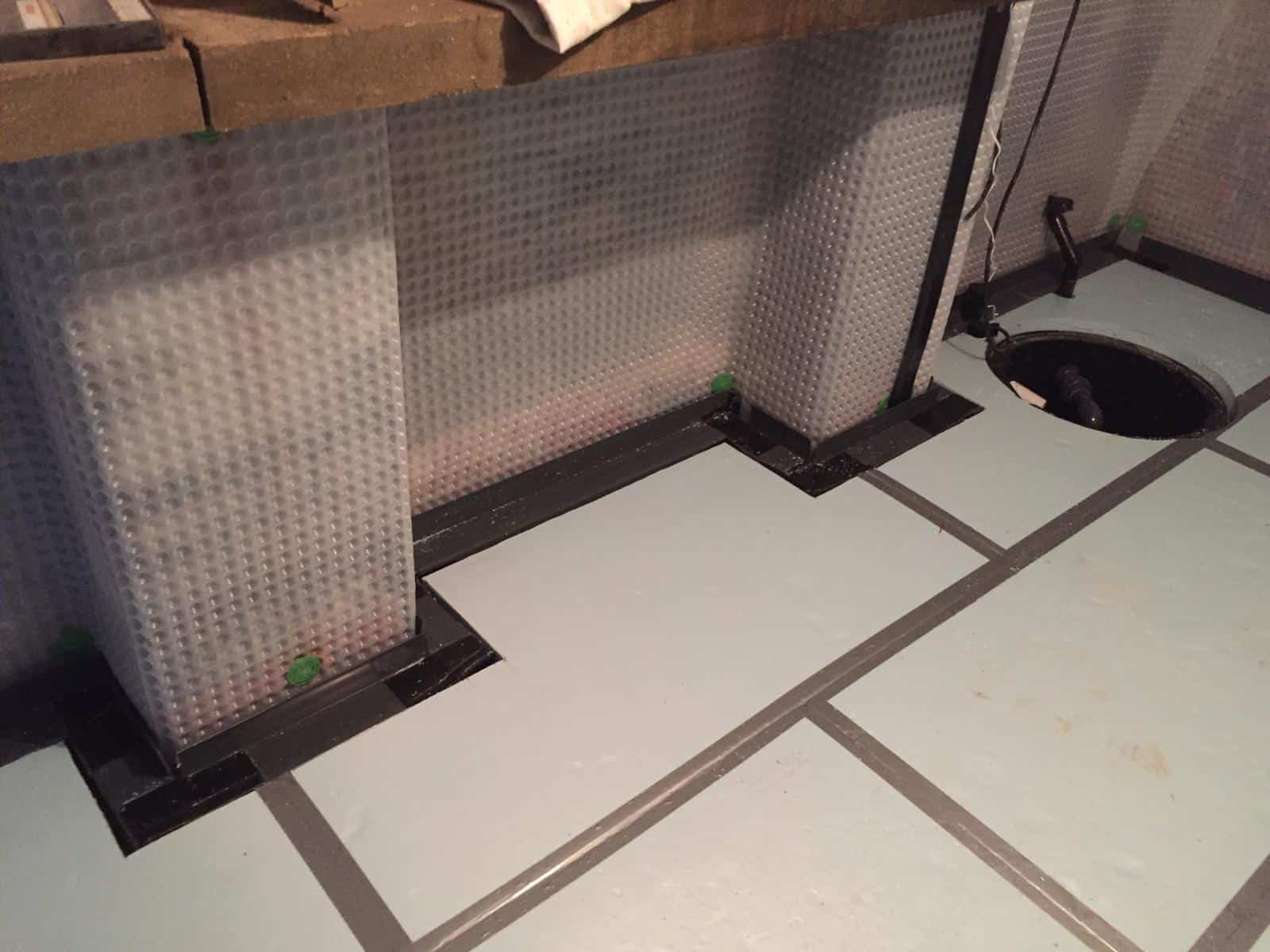Top-rated companies for damp removal newcastle: What to look for
Top-rated companies for damp removal newcastle: What to look for
Blog Article
Discovering the Numerous Methods and Solutions for Effective Damp Proofing
Moisture in structures presents substantial challenges to both architectural stability and indoor air high quality. Various strategies and remedies have actually arised to fight this pervasive issue. From typical damp-proof membrane layers to ingenious chemical treatments, each approach uses distinct benefits. Understanding these alternatives is vital for efficient wetness control. Nonetheless, picking the ideal solution depends upon certain structure conditions and needs, triggering further exploration into one of the most reliable wet proofing methods available.
Recognizing the Root Causes Of Dampness
Moisture can arise from various resources, understanding these reasons is essential for efficient removal. Commonly, wetness originates from 3 key sources: climbing moist, penetrating moist, and condensation. Climbing damp happens when groundwater travels up-wards with porous products, such as block or rock, often as a result of an absence of an efficient obstacle (mould treatment newcastle). Penetrating wet is generally triggered by exterior variables, including roofing leaks, defective rain gutters, or harmed wall surfaces, permitting water to infiltrate a home. Condensation, on the other hand, results from excess moisture airborne, usually aggravated by poor ventilation and temperature differences, causing water droplets basing on surface areas. Identifying these underlying issues is essential, as each sort of moisture calls for a tailored method for remediation. Appropriate evaluation assists in figuring out the most efficient services, eventually safeguarding the architectural integrity of a building and improving indoor air high quality
Conventional Damp-Proof Membranes

Chemical Damp-Proofing Solutions
Chemical damp-proofing solutions use a cutting-edge strategy to avoid wetness breach in buildings. These methods commonly entail the application of liquid chemicals that permeate masonry and create a barrier against climbing damp. Commonly utilized chemicals include silanes, siloxanes, and various other water-repellent agents that respond with surface area materials to produce a hydrophobic layer.The application process generally needs boring openings right into the walls, infusing the chemical solution, and enabling it to heal. This technique is specifically helpful for older structures where typical damp-proof membranes might be impractical. In addition, chemical damp-proofing can be less turbulent and much more cost-effective than substantial renovation projects.While effective, these solutions rely on correct application and environmental conditions for peak performance. Regular maintenance and tracking are important to assure the durability of the damp-proofing therapy. On the whole, chemical damp-proofing represents a functional choice for guarding buildings versus moisture-related damage
Dental Caries Wall Building And Construction Techniques
Cavity wall building techniques offer various advantages, specifically in moisture control and power performance. By including an air space between two layers of masonry, these walls successfully alleviate water access while enhancing insulation. This mix not only protects structures from moisture however likewise adds to reduced power usage.
Benefits of Dental Caries Wall Surfaces
When taking into consideration reliable wet proofing techniques, the benefits of tooth cavity wall surfaces stand apart prominently. Tooth cavity wall surfaces are composed of 2 separate layers, creating an air space that properly lowers moisture infiltration. This design minimizes the threat of wetness, as the outer wall surface acts as an obstacle versus rainfall and water access. Additionally, cavity walls improve thermal insulation, which adds to energy efficiency by minimizing heat loss. They additionally provide audio insulation, helping to create a quieter interior environment. The air gap allows for ventilation, which aids in moisture control and decreases the possibility of mold growth. These benefits not only improve the total convenience of a structure but also contribute to its long life and structural stability.
Wetness Control Strategies
Effective moisture control methods are vital in tooth cavity wall building and construction to guarantee long-lasting defense against moisture. One main technique involves the unification of weep holes, which facilitate water drain from the dental caries, preventing accumulation. In addition, using breathable membranes can help take care of wetness levels while permitting caught vapor to leave. Proper placement of insulation is also essential, as it must not block drainage paths. In addition, guaranteeing that the external fallen leaves of the cavity wall are created with water-resistant products boosts overall longevity. Regular maintenance checks are vital to recognize any kind of blockages or damage early, protecting the structure's integrity. Ultimately, a combination of these strategies creates a robust protection versus dampness breach in dental caries wall surfaces.
Insulation and Power Performance
Insulation plays a vital role in enhancing energy effectiveness within tooth cavity wall surface building and construction. By including shielding products, these wall surfaces develop a thermal obstacle that lessens heat loss and lowers power intake. Effective insulation not just helps maintain a secure indoor temperature level yet likewise reduces the danger of dampness, as it avoids condensation within the wall dental caries. Numerous strategies, such as making use of stiff foam boards or mineral wool, can be employed to attain excellent insulation efficiency. Furthermore, proper installment is vital to ensure that gaps and voids are lessened, which can or else jeopardize energy performance. Eventually, a well-insulated cavity wall surface contributes significantly to overall sustainability and decreases cooling and heating expenses for property owners.
External Damp Proofing Approaches
Outside damp proofing approaches are necessary for securing structures from dampness infiltration. Two efficient techniques consist of the application of water-proof membranes and the installment of French drains. These solutions help minimize water accumulation and preserve the integrity of structures.
Waterproof Membrane Application
While numerous methods exist for preventing dampness access, the application of waterproof membranes remains a very efficient external damp proofing technique. These membrane layers are generally made from products such as polyethylene, rubber, or customized asphalt, offering a robust barrier versus water penetration. The installment process entails using the membrane layer to the outside surfaces of wall surfaces or structures, guaranteeing total coverage to avoid leaks. Correct adhesion and sealing at joints are critical to making the most of efficiency. Water-proof membrane layers can be applied in various forms, including liquid finishes and sheet membranes, enabling for flexibility based on the certain requirements of the structure. This approach not only shields buildings from dampness but also enhances their longevity and structural integrity.
French Drainpipe Installment
One reliable approach for taking care of groundwater and preventing moisture build-up around a structure's structure is the setup of a French drainpipe. This drain system consists of a trench loaded with gravel and a perforated pipeline that reroutes surface area water far from the structure. Appropriate setup needs cautious planning, making sure that the drainpipe inclines far from the framework to facilitate optimal water flow. Furthermore, the location of the drain is important; it must be placed in areas prone to pooling or excess moisture. Regular upkeep, including clearing particles from the gravel and guaranteeing the pipeline continues to be unblocked, is important for long-term performance. Eventually, a well-installed French drain can substantially minimize the danger of water-related concerns in structures and cellars.
Inside Waterproofing Techniques
Interior waterproofing approaches are crucial for securing a building's inside from wetness infiltration and possible water damage. These approaches typically include the application of specific materials and methods designed to create a dampness barrier within the structure. One common strategy is using water resistant coatings or sealants on wall surfaces and floorings, which prevent moisture from permeating surfaces.Additionally, setting up indoor drain systems, such as sump pumps, can efficiently take care of water build-up in cellars and crawl areas. One more method entails the use of vapor barriers, which are set up to prevent dampness movement from the ground right into living spaces.Moreover, addressing any fractures or voids in wall surfaces or structures with appropriate sealants ensures an extensive protection versus water intrusion. By executing these indoor waterproofing strategies, homeowner can considerably reduce the danger of mold and mildew growth, architectural damages, and various other moisture-related issues. Proper execution of these methods is essential for long-lasting protection and building stability.
Normal Maintenance and Assessment Practices
Normal upkeep and examination techniques are vital for guaranteeing the long-term effectiveness of damp proofing services in any type of building. Routine checks allow residential or commercial property proprietors to determine very early signs of moisture breach, such as peeling paint, mold development, and moldy smells. These indications can signify underlying problems that require instant attention.Inspections need to be performed at least every year, concentrating on prone locations like basements, creep spaces, and outside wall surfaces. Throughout these evaluations, residential or commercial property owners should check out sealers, drain systems, and ventilation to confirm they work correctly.Additionally, preserving downspouts and gutters is important, as clogged more info systems can bring about water buildup near the foundation. Executing a regular upkeep timetable, in addition to prompt fixings, can significantly expand the life expectancy of damp proofing procedures and protect the architectural integrity of the structure. Proactive actions ultimately add to the general health and safety and security of the living atmosphere.
Frequently Asked Inquiries
For How Long Does Damp Proofing Normally Last?
The duration of damp proofing effectiveness differs, usually lasting between 20 to half a century. Factors such as application high quality, environmental problems, and upkeep methods significantly affect the longevity of the moist proofing treatment.

Can I Damp Proof My Home Myself?
The individual pondered the usefulness of DIY damp proofing. With correct research and the ideal products, it is feasible. They additionally recognized the importance of expert assistance to guarantee resilient effectiveness and prevent future problems.
What Are the Indicators of Inadequate Damp Proofing?
Signs of inefficient moist proofing consist of relentless musty smells, visible mold and mildew development, peeling off paint, moist spots on walls, and wood degeneration - damp removal newcastle. Homeowners must resolve these problems quickly to protect against further damage and health and wellness worries
Does Damp Proofing Affect Indoor Air Top Quality?

Just How Much Does Professional Damp Proofing Expense?
Specialist moist proofing expenses differ substantially, generally ranging from $1,000 to $5,000 relying on the building's dimension, the degree of the moist issue, and selected methods. Each scenario calls for a tailored evaluation for precise rates. Commonly, moisture stems from 3 key sources: increasing moist, passing through wet, and condensation. When considering effective damp proofing techniques, the benefits of cavity wall surfaces stand out prominently. Outside damp proofing approaches are necessary for safeguarding frameworks from moisture infiltration. While different techniques exist for protecting against dampness ingress, the application of waterproof membranes remains a highly effective external damp proofing technique. Signs of ineffective damp proofing include persistent moldy odors, visible mold and mildew development, peeling off paint, moist patches on walls, and wood decay.
Report this page